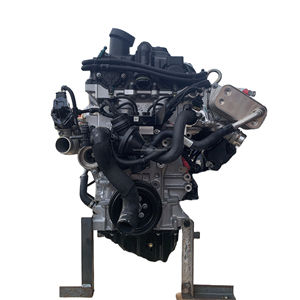Exploring the Inner Operation of a Compact Car's Engine System
As vehicle drivers, we often take for provided the detailed processes that take place within the confines of our car's engine system. In this expedition of a small car's engine system, we will untangle the internal workings of this mechanical harmony, losing light on the secrets that drive us forward on our daily trips.
Burning Process Introduction
The combustion procedure in a portable car's engine system is an essential mechanism that efficiently converts gas right into power to power the lorry. This process occurs within the burning chamber of the engine, where gas and air mix, ignite, and produce controlled explosions. The combustion process consists of four main stages: consumption, compression, exhaust, and power.
During the consumption stage, the piston relocates downward, reeling in a mixture of air and fuel into the combustion chamber. The next stage, compression, entails the piston moving upward, compressing the air-fuel combination to raise its effectiveness. Subsequently, in the power phase, the spark plug stirs up the compressed mixture, leading to a rapid development of gases that forces the piston pull back. This descending motion generates the power required to drive the automobile. In the exhaust stage, the burned gases are gotten rid of from the combustion chamber via the exhaust shutoff, preparing the chamber for the following cycle. This cyclic combustion procedure is basic to the operation of a small vehicle's engine system, ensuring effective power conversion for propulsion.
Piston and Cyndrical Tube Communication

The piston's specific fit within the cyndrical tube is essential for keeping optimum compression and protecting against power loss during combustion. Limited clearances in between the piston and cyndrical tube walls guarantee efficient securing, enabling the piston to move smoothly without permitting gases to leak past. Proper lubrication is additionally crucial to minimize friction and put on between these components, boosting durability and performance.
In addition, the style and materials made use of in producing the piston and cyndrical tube effect engine useful content efficiency and resilience. Modern engines often utilize lightweight yet sturdy materials like light weight aluminum alloys for pistons and cylinder linings to decrease inertia and enhance thermal effectiveness. Overall, the unified interaction between the piston and cyndrical tube is essential to the engine's capability and general efficiency.
Fuel Shot System Functionality
Fuel shot systems in compact automobile engines play a crucial function in precisely providing gas to the combustion chamber for controlled and effective ignition. The gas shot system functions by injecting gas right into the combustion chamber at the ideal minute throughout the engine's procedure (opel corsa engine). This accurate timing makes sure that the gas blends evenly with the air for appropriate burning, bring about improved fuel effectiveness and minimized exhausts
There are primarily two sorts of gas shot systems made use of in compact vehicle engines: port fuel injection (PFI) and direct fuel shot (DFI) PFI systems infuse gas right into the consumption port prior to the consumption shutoff, while DFI systems infuse gas straight right into the burning chamber. Both systems have their benefits, with DFI supplying far better gas atomization and PFI providing a more affordable remedy.
Comprehending Engine Air Conditioning Systems
Reliable procedure of a compact automobile's engine relies heavily on the performance of its cooling mechanisms. The air conditioning system in a compact car generally is composed of numerous components functioning with each other to regulate the engine temperature level. Recognizing these engine cooling systems is essential for maintaining the performance and long life of a portable car's engine system.

Exhaust System Elements Explained
The optimal see it here functioning of a compact vehicle's engine air conditioning devices depends on a corresponding system recognized as the exhaust system, which makes up different crucial elements for guaranteeing efficient discharges and engine efficiency. The exhaust manifold collects exhaust gases from the engine's paths and cylinders them to the catalytic converter.
One important component of the exhaust system is the oxygen sensor, which checks the oxygen levels in the exhaust gases to aid control gas consumption and make sure ideal engine performance. opel corsa engine. In addition, the resonator may be present in some exhaust systems to reduce sound levels. Overall, the exhaust system plays a vital duty in preserving engine efficiency, lowering dangerous discharges, and ensuring a quieter driving experience for portable automobile owners

Conclusion
In final thought, the compact automobile's engine system is a complex combination of elements that collaborate to promote the combustion procedure, convert fuel right into energy, and eliminate waste gases. Understanding the internal operations of the engine system, including the piston and cyndrical tube communication, fuel injection system, engine cooling systems, and exhaust system parts, is important for keeping optimal performance and performance of the vehicle.
The combustion process in a portable car's engine system is a critical system that effectively transforms gas into energy to power the car.Gas shot systems in compact car engines play an important duty in specifically delivering fuel to the combustion chamber for effective and regulated ignition.There are primarily two types of fuel injection systems used in portable automobile engines: port gas shot (PFI) read the full info here and straight gas injection (DFI) Comprehending these engine air conditioning systems is crucial for keeping the efficiency and longevity of a small automobile's engine system.
The optimal functioning of a small car's engine cooling mechanisms depends on a complementary system known as the exhaust system, which comprises various essential elements for making sure effective discharges and engine performance.